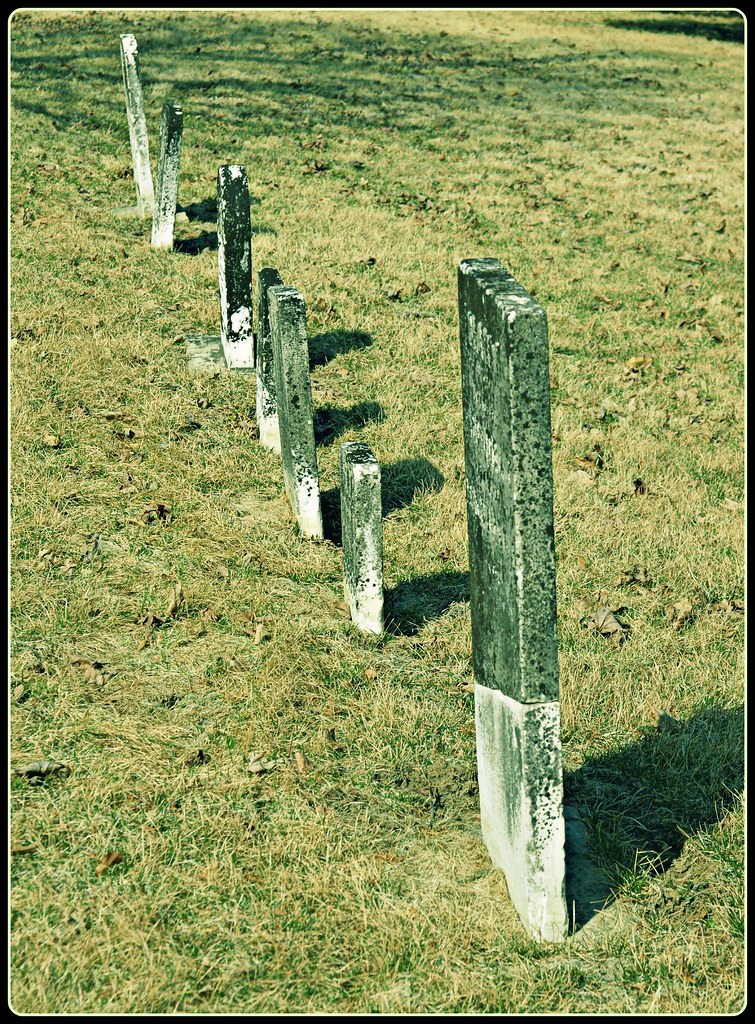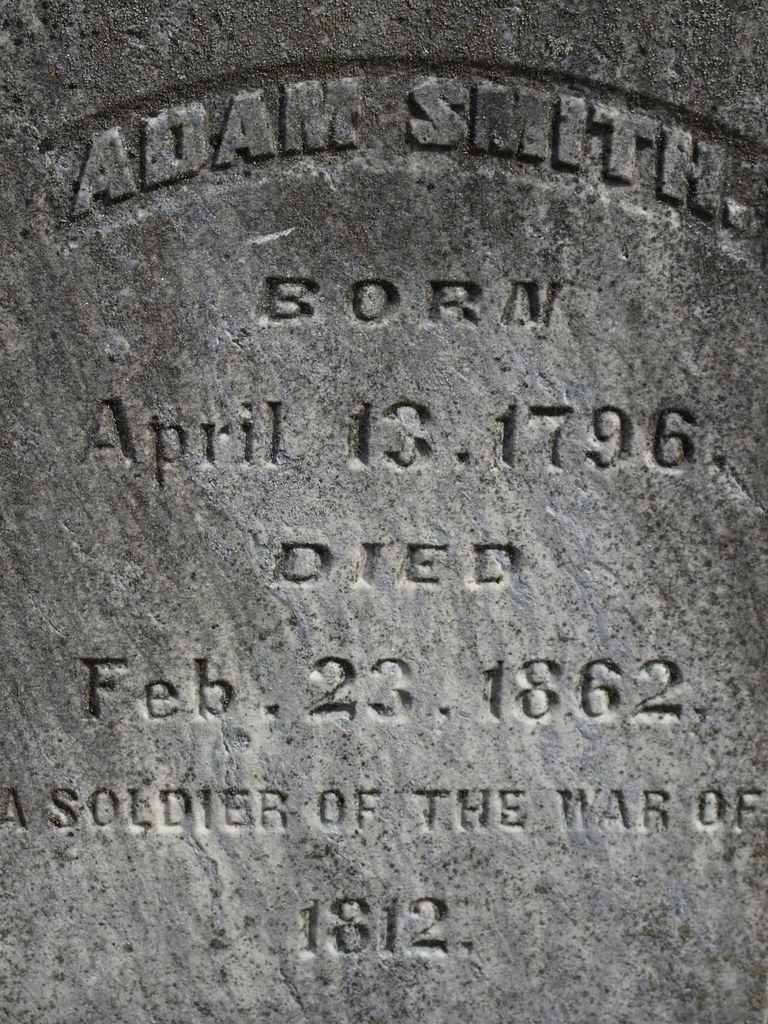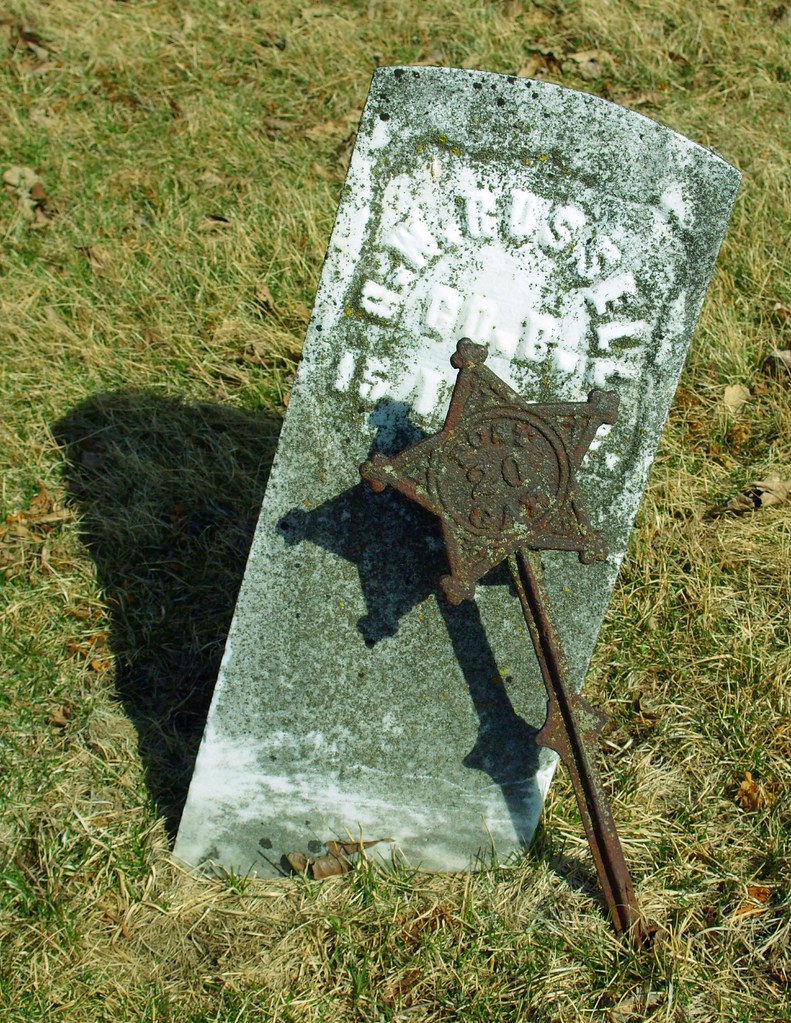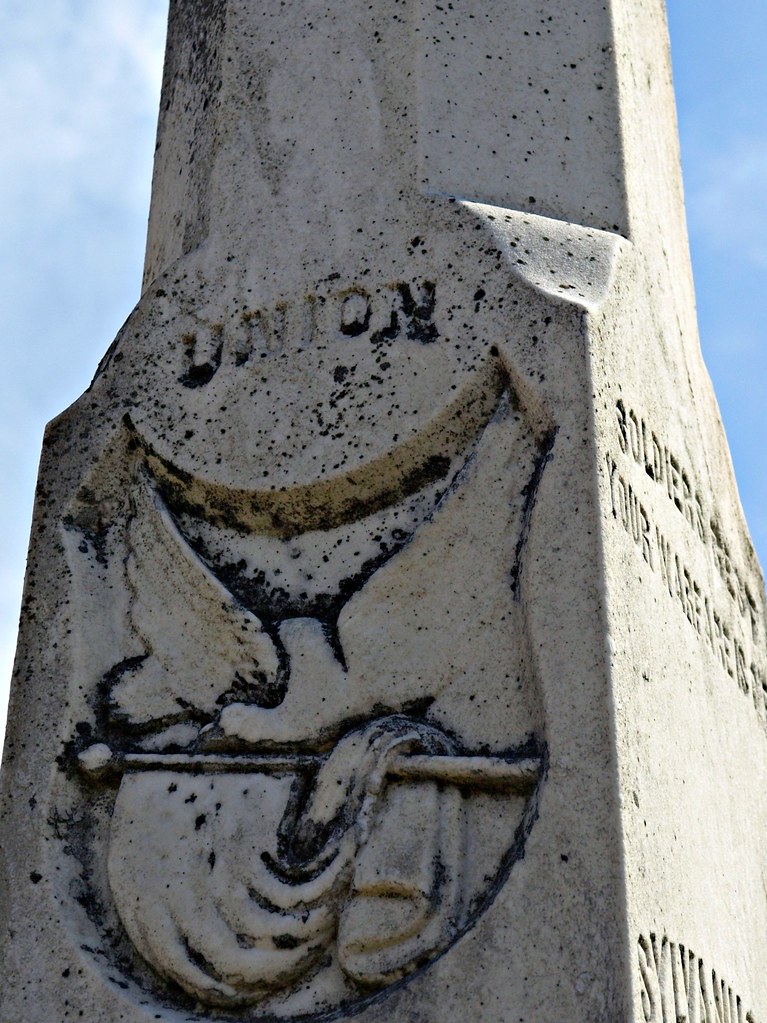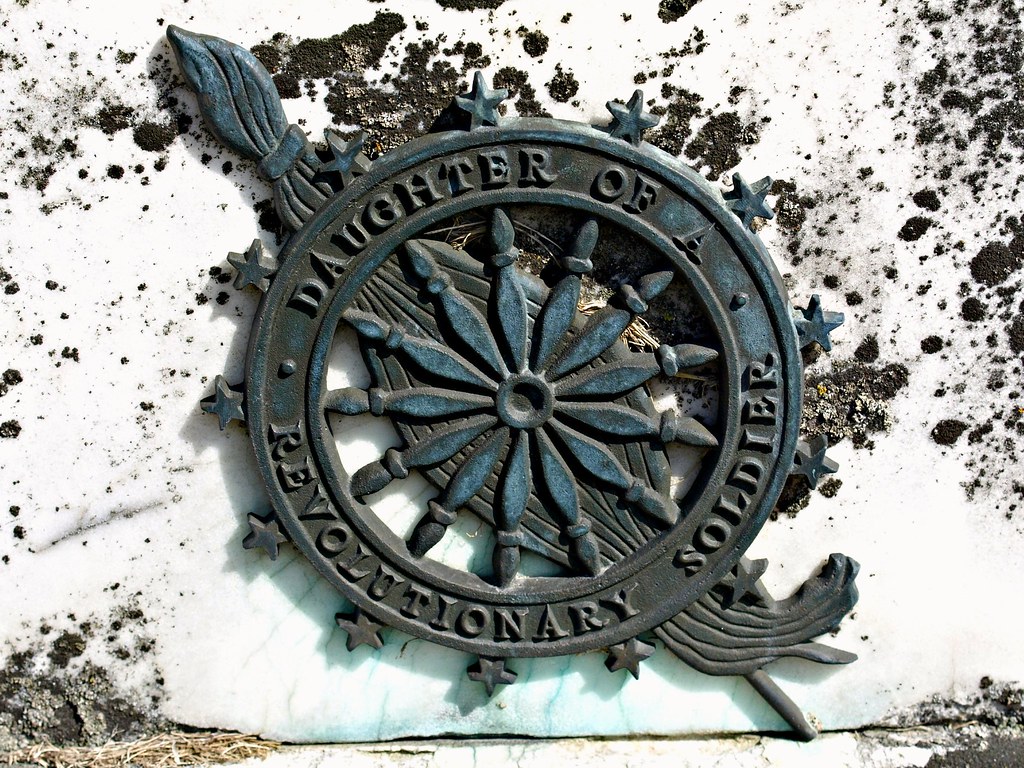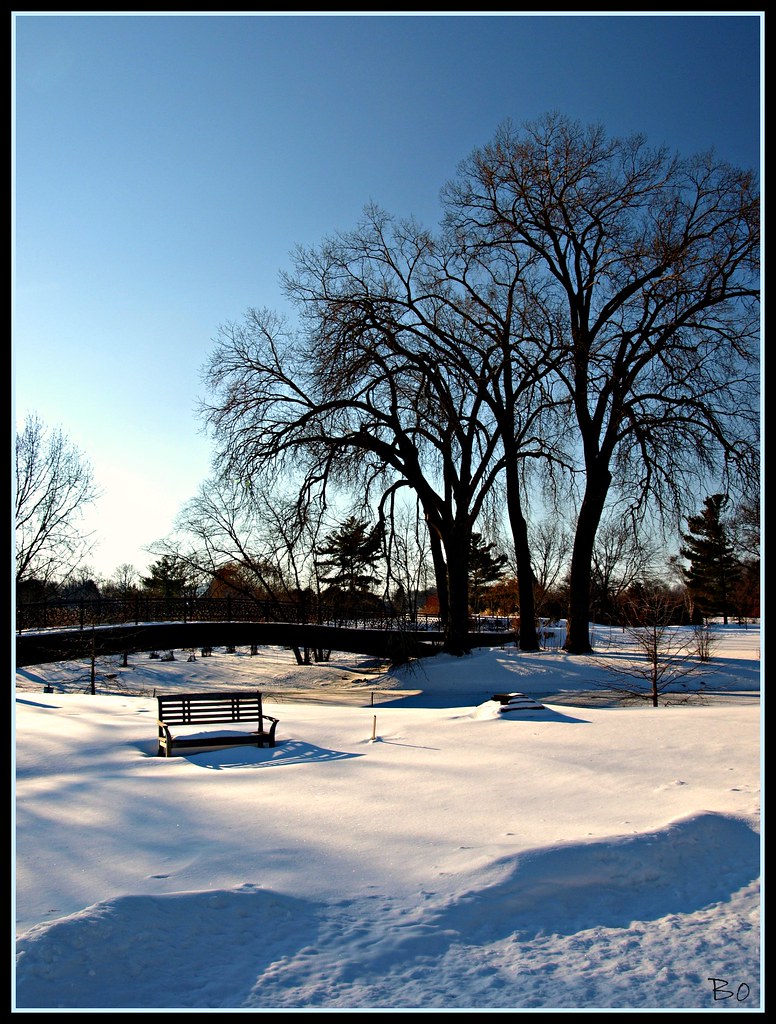On our travels through Iowa last week, we stopped at a mostly hidden cemetery along a highway posted as the “Avenue of the Saints.” (Nothing religious about that name – it is the stretch of highway extending from its most Northern city, St. Paul, MN, to its southern terminus, St. Louis, MO.)
We happened upon Hickory Grove Cemetery, outside of Mount Pleasant, an east-central Iowa town. An old cemetery, it was of some interest because of the variety of memorials we found honoring soldiers and their descendants from many of the United States’ earlier wars. I found it a worthwhile site to visit for awhile because of its historical significance.
Most of the tombstones were slabs or simple carved stones, no fancy angels or hovering figures and few crosses. A few of the sites had flowers and it was a well-tended area, but it felt haunting, standing high on a hill under a stand of old hickories. Most of the tombstones were from the 1800s; only a few were from the 1900s.
This man fought in the war of 1812, and died on the cusp of another massive war effort, the War between the States.
The star marking D Russell’s tomb is marked FORT 20 GAR. He would have been a member of the GAR – the Grand Army of the Republic. This was an organization founded by returning soldiers from America’s Civil War, and was very active in the Midwest’s Northern tier states. FORT 20 refers to the district Russell attended – in Mount Pleasant, Iowa.
Iowa supported the Northern efforts in the Civil War, and a monument to the state’s soldiers stands in the cemetery.
This marker does not honor a soldier, but one of the soldier’s descendants. The woman was a member of the Daughters of the American Republic (DAR) which means she was a lineal female descendant of an American Revolutionary Soldier.
Hickory Grove Cemetery is not unique. It is history. This cemetery is representative of the many small town plots in the countryside of the Midwest – all marking in some way the life paths these people took many scores of years ago.
